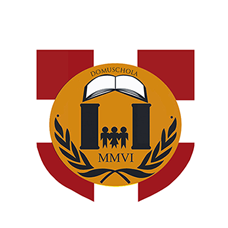
What is the Difference Between Preschool and Pre-Primary
Early childhood learning is key to a child’s intellectual journey. While both approaches emphasise fundamental education, they focus on distinctive curricula and ideologies. This article shares distinctions to enable parents to make educated decisions regarding their child’s early learning experience, resulting in a seamless transition from the best preschool in Metro Manila to primary school.
Difference between Preschool and Pre-Primary:
Listed below are the primary differences between preschool and pre-primary education to help parents make an informed decision impacting their child’s future:
Preschool:
1. Definition:
Preschool is an early childhood structure that trains learners for their formal learning journey. It builds a monitored yet joyful atmosphere where young learners can gain primary intellectual, social, and motor abilities via dynamic classroom activities. Preschool education emphasises building creativity and core academic understanding in a supportive environment.
2. Types of Preschools:
Preschool programs differ as per multiple instructional ideologies and academic approaches. Some notable curricula options include Waldorf, Montessori, Reggio Emilia and play-based learning. Parental values, future goals, learning style and needs are some factors that can influence the final decision.
3. Advantages:
Preschools build a solid foundation for a child’s emotional and social growth. They improve early reading and numeracy abilities via interactive learning. Children learn interpersonal, mental, and problem-solving skills, which boosts communication and confidence. Structured routines promote independence and adaptation. Furthermore, preschool qualifies young children for continuous formal learning, allowing an effortless transition to elementary school.
4. Includes:
Preschool programs employ interactive activities like art projects, narrative storytelling and sensory play. Informative games and hands-on exercises reinforce core reading and numeracy skills in young minds. Group activities promote social skills, whereas outdoor play improves motor abilities. Guided exploration and disciplined routines help to support emotional growth and intellectual curiosity.
5. Age Group:
Preschool is ideal for kids between two to four, depending on the nation and program structure. Some programs take children as young as 18 months, whereas others cater to preschoolers up to five years.
6. Purpose and Focus:
Preschool seeks to expose young minds to systematic learning enjoyably and excitingly. It emphasises building early reading, numeracy, and motor abilities while encouraging mental and social growth. Children gain communication and self-control skills via collaborative play and guided activities. The idea is to help kids prepare for primary school by instilling confidence and flexibility in an accepting setting.
7. Classroom Environment:
A preschool classroom is lively and child-centred to nurture creativity and curiosity. It has allocated play areas, reading nooks, and experimental learning spaces with age-appropriate games and resources. Preschools also focus on comfort and safety to promote discovery and collaboration. Teachers employ appealing resources and exercises to foster intellectual growth for secondary-level education, Philippines.
Pre-primary:
1. Definition:
Pre-primary school is an early-age education level for children preparing for elementary school. It offers a structured curriculum specialising in introductory language, mathematical and intellectual growth. Pre-primary education enables school preparation, discipline, and independent thinking. It ensures that children have the necessary cognitive and social abilities before they enter primary school.
2. Types of Pre-Primary Schools:
Pre-primary education differs according to the curriculum and instructional techniques. Some schools use national or international frameworks, including CBSE, IB PYP, or Cambridge Early Years. These programs blend organised academics with innovation and problem-solving, qualifying students for future academic achievement.
3. Advantages:
Pre-primary school helps kids master early reading, arithmetic, and problem-solving competencies, training them for formal education. It teaches discipline, independence, and established study habits. Social connections teach collaboration, communication skills, and emotional intelligence. The curriculum boosts creativity and adaptation, supporting a seamless transition to primary school while instilling self-confidence and a love for continuous learning.
4. Includes:
Pre-primary schools offer core literacy and mathematics classes with participatory activities, including storytelling, simulation, and group projects. It merges science, creative arts, and athletics to promote overall development. Emotion and social growth are prioritised, allowing primary school children to acquire discipline, problem-solving abilities, and self-assurance in a welcoming environment.
5. Age Group:
Pre-primary schools generally serve children aged four to six years, based on the relevant school systems and national legislation. Some programs have multiple stages, including nursery, lower and upper kindergarten.
6. Purpose and Focus:
Pre-primary education trains young kids for elementary school by imparting fundamental academic and life skills. The emphasis is on standardised learning, early literacy and the ability to resolve challenges. It inspires individuality, discipline, and social interactions. Through supervised activities, children increase logical thinking, creativity, and flexibility, providing an easy transition to first grade with optimism and preparation.
7. Classroom Environment:
A pre-primary classroom is functional but stimulating, emphasising active learning. It has specific areas for writing, reading, and creative inquiry. Learning charts, games and group workspaces are examples of interactive aids that help with structured teaching. The atmosphere promotes partnership, curiosity, and independence while encouraging discipline and thinking skills in an uplifting and exciting setting.
Conclusion:
Preschool and pre-primary play distinct roles in early childhood development. Preschool stresses play-based learning and fundamental skills, whereas pre-primary focuses on independence and preparedness for advanced education, such as the IB diploma programme. Understanding these distinctions allows parents to select the appropriate level for their kids, providing a seamless transition into elementary school.

